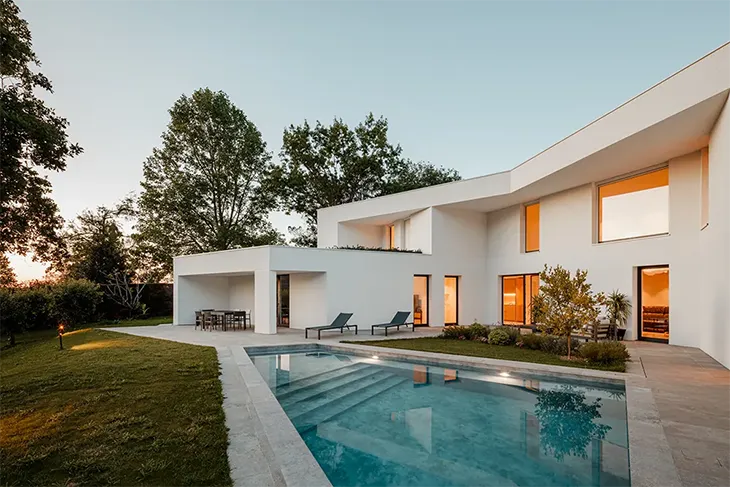
Purchasing a modern home with a stunning design is an exciting and life-changing decision. With so many options available and factors to consider, the journey can feel overwhelming. However, with a clear strategy and proper planning, you can confidently navigate the process and secure a home that combines style. While it’s essential to factor in the costs of the property itself, there are also ongoing expenses like interest, taxes, and insurance. This is where online tools and calculators can come in handy. By estimating your monthly payments, including interest, you can better plan and prepare for what’s ahead.
Let’s explore the steps that will guide you to a successful purchase!
Understanding Your Budget: The First Step
Before you start touring homes, it’s important to have a clear understanding of your budget. Knowing how much you can afford to spend is essential to narrowing down your options and avoiding financial strain. Take into account your income, savings, and any existing debts. Consider all expenses, including the mortgage, property taxes, insurance, and maintenance costs. It’s also wise to plan for unexpected expenses. By calculating how much you can comfortably allocate for monthly mortgage payments, you’ll be in a better position to find a modern home that fits within your financial range.
Exploring Mortgage Options and Calculating Payments
When purchasing a modern home, understanding your mortgage options is crucial. Modern homes often come with higher price tags, and finding the right mortgage will play a big part in making your purchase manageable. There are several types of mortgages available, including fixed-rate and adjustable-rate options. Each one comes with its benefits and drawbacks, depending on your financial situation and how long you plan to stay in the property. One of the best ways to understand what a mortgage will cost you is by using a mortgage payment calculator with interest rates. These tools can help you figure out your monthly payments, factoring in both the loan amount and the interest rate. Many calculators allow you to adjust the loan term and interest rate, so you can easily see how these changes affect your payments. This helps you make an informed decision on what works best for your budget and long-term financial plans.

The Importance of Pre-Approval
Getting a loan pre-approved before you start house hunting is a crucial step. Pre-approval shows sellers that you are a serious buyer. It also gives you a lead in a competitive market. In this process, a lender will review your financial background, including your credit score, income, and debt. Once approved, you’ll know exactly how much you can borrow and at what rate. With this information, you can confidently make offers, knowing you’re not stretching your finances too thin. Pre-approval also helps streamline the home-buying process, reducing delays when you find the right property.
Choosing the Right Location
Location plays a significant role in the overall value of a property. Before you begin your search, consider what matters most to you in a location: proximity to work, access to amenities, the quality of local schools, or long-term investment potential. Take time to research various neighborhoods to find one that aligns with your lifestyle. It’s essential to think about current needs and future plans, as the value of a location can change over time. In addition to personal convenience, a well-chosen location can impact the property’s future resale value.
How to Work with a Real Estate Agent
A real estate agent can be an invaluable partner when buying a modern home. They have a deep understanding of the local market and can help you find properties that match your criteria. It’s important to ask the right questions when selecting an agent. Find someone with experience in the area you’re interested in, and make sure they have a track record of working with buyers, not just sellers. A good agent will listen to your needs, help you narrow down your options, and negotiate the best deal on your behalf. Keep in mind that their commission is typically paid by the seller, so you get expert assistance without the upfront cost.
The Home Search: What to Look For
When shopping for a modern home, it’s easy to get excited by sleek designs and stylish interiors. However, it’s essential to focus on the home’s core features, such as its layout, condition, and space for future expansion. Make a list of must-have features that match your lifestyle, such as open-concept living spaces, energy-efficient appliances, and plenty of natural light. While aesthetics are important, ensure that the home’s structure and foundation are solid, as these elements can save you money on repairs down the road.

Understanding the Market: Is It a Buyer’s or Seller’s Market?
Understanding whether you’re in a buyer’s or seller’s market is key to making strategic decisions. In a buyer’s market, there are more homes available than buyers, which often leads to lower prices and more room for negotiation. In contrast, a seller’s market occurs when demand exceeds supply, and homes often sell for more than the asking price with fewer opportunities to negotiate. Knowing the state of the market allows you to tailor your approach, whether that’s being patient to find the best deal or acting quickly to secure a property before it gets snatched up.
Making an Offer: How to Structure a Competitive Bid
Once you’ve found your dream modern home, making a competitive offer is the next step. Your offer should be based on your budget, but it also needs to reflect the value of the home and the current market conditions. A well-structured offer includes more than just the price. Consider the contingencies and deposit amount. You may need to offer a larger deposit in a seller’s market to show that you are serious. Your real estate agent can help guide you through this process to make sure your offer stands out, especially in competitive situations.
The Inspection and Appraisal Process
Once you’ve made an offer and it’s been accepted, it’s time to have the property inspected and appraised. The inspection is designed to uncover any hidden issues, from plumbing problems to electrical faults, which might not be visible during a casual viewing. Depending on the findings, you may decide to renegotiate the price or ask the seller to make repairs. The appraisal, on the other hand, ensures that the home’s value aligns with the loan amount. If the appraisal comes in lower than the purchase price, you may need to make up the difference or reconsider your offer.
The process of buying a modern home with a stunning design doesn’t have to be stressful. By breaking the journey down into manageable steps, understanding your budget, researching mortgage options, and working with professionals, you can ensure that you’re making the best possible decision. Always keep your long-term plans in mind when evaluating properties, and use available tools and resources to stay on track. By following these steps, you’ll find a modern home that not only suits your lifestyle but also offers a smart investment for the future. Happy house hunting!
Images from L10 Residence House by BAT Architecture – see full article here.



















